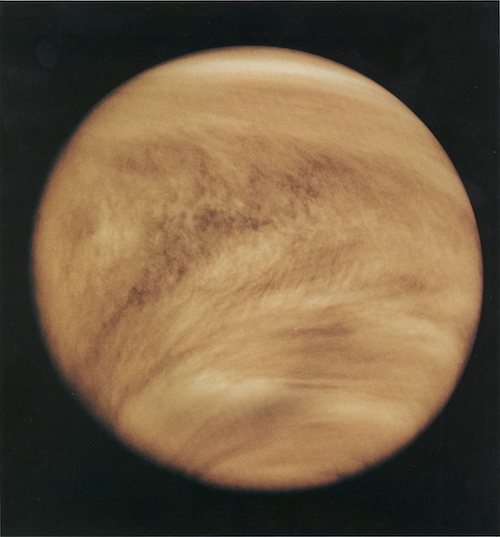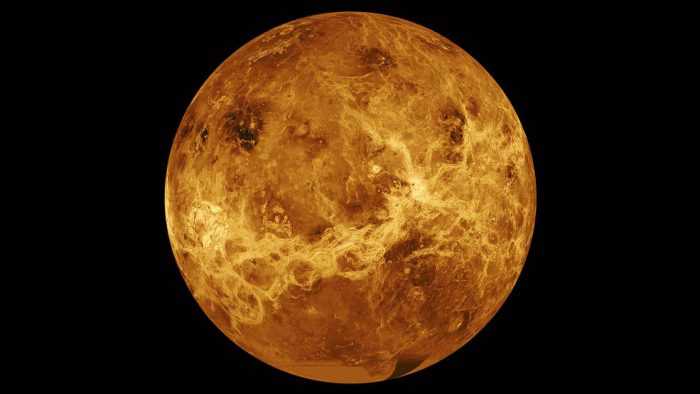During the 1970s and 1980s, together the United States and Russia sent over 20 missions to Venus. It was a bonanza. And then ... nothing.
In fact, after NASA launched the orbiter Magellan in 1989, the only other craft sent to explore Venus by anyone was a European Space Agency (ESA) orbiter called Venus Express in 2005. Mars, the Moon, Jupiter, and Saturn have all received a lot more attention. Why? Well, Venus is ... hot.
Excruciatingly hot. As in the hottest planet in the solar system. It's so hot, that any craft that has landed on its surface has only been able to stay functioning for a couple minutes. Sounds like a good reason to stay away!
But earlier this month, NASA announced that after over 30 years away, they're heading back. And not once, but twice: an orbiter named VERITAS and a surface probe called DAVINCI+. What sort of hijinks could they be up to? Let's turn up the heat!
Who left on the furnace?

Venus' atmosphere is pretty impossible to see through. And it's even worse when you're inside it. (NASA)
But first, let's talk about what makes Venus too hot to handle. The planet's atmosphere.
Wrapped in a brutally dense blanket of mainly carbon dioxide, Venus' atmosphere traps heat mercilessly. The surface temperature is about 467 °C (872 °F). That's like a professional wood-fired pizza oven. And the heat is only the beginning.
The thickness of the atmosphere also means that the pressure at the surface is crushing. Literally. It's the same level of force as 900 metres (3,000 feet) deep in the ocean. So basically, if the electronics on the craft that you send to Venus aren't fried, they'll be crushed. And likely both.
Also, the atmosphere is extremely toxic and it rains sulphuric acid. And that rounds up our tour of Venus!
Learning what happened

An image beamed back by the USSR's Venera 9 lander in 1975 on the planet's surface. The craft didn't last long. (USSR/Wikimedia Commons)
Except, not so fast. Because as we said, NASA is heading back. Why? To try to learn exactly what happened to Venus.
Scientists believe that—like Mars—the planet was once much closer to Earth than it is now. It's almost identical in size, made of similar stuff, and probably had liquid water on its surface. Maybe even life. But at some point, many millions of years ago, things took a turn. Scientists hope that by analyzing the atmosphere and surface of Venus, they can get more clues why.
The vehicles

Going down! An artist's concept of DAVINCI+ falling to the surface of Venus. (NASA/GSFC)
To grab this information, they are using two spacecrafts.
VERITAS (which stands for Venus Emissivity, Radio Science, InSAR, Topography, and Spectroscopy) is an orbiter designed to map the surface of the planet. This was actually kind of what Magellan did back in 1989. But the sensors and gadgets on VERITAS are far more advanced. They will be able to use infrared tech to cut through Venus' thick atmosphere and see not only the mountains and valleys on the surface, but also learn whether there are active volcanoes or if plate tectonics are happening. (Plate tectonics are a key to how Earth's surface moves, as well as many other things that make Earth special!)
Then there's DAVINCI+ (Deep Atmosphere Venus Investigation of Noble gases, Chemistry, and Imaging). This probe is headed to the surface. And though the trip won't end well for the craft, scientists are going to use every last second of its trip through the atmosphere and to the surface to learn all they can. DAVINCI+ will give us the most detailed readings of Venus' atmosphere ever. It is also hoped that it will take the best images of the planet's surface ever.
Sounds pretty great, right? We agree, though sadly, both projects are still in development. They won't launch until around 2030. Until then, though, we've got this video!
 This composite—or combined—image of Venus' surface is based on radar data from missions sent over 30 years ago. NASA is ready to try to do better. (NASA/JPL-Caltech)
This composite—or combined—image of Venus' surface is based on radar data from missions sent over 30 years ago. NASA is ready to try to do better. (NASA/JPL-Caltech)










That is so cool (I mean HOT). I can’t wait to be an astronaut!